SEPTEMBER 24, 2023
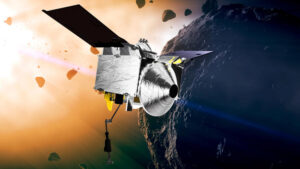
FILE – This illustration provided by NASA depicts the OSIRIS-REx spacecraft at the asteroid Bennu. On Sunday, Sept. 24, 2023, the spacecraft will fly by Earth and drop off what is expected to be at least a cupful of rubble it grabbed from the asteroid Bennu, closing out a seven-year quest. (Conceptual Image Lab/Goddard Space Flight Center/NASA via AP, File)
NASA’s first asteroid samples fetched from deep space parachuted into the Utah desert Sunday to cap a seven-year journey.
In a flyby of Earth, the Osiris-Rex spacecraft released the sample capsule from 63,000 miles (100,000 kilometers) out. The small capsule landed four hours later on a remote expanse of military land, as the mothership set off after another asteroid.
“We have touchdown!” Mission Recovery Operations announced, immediately repeating the news since the landing occurred three minutes before anticipated. Officials later said the orange striped parachute opened four times higher than anticipated — around 20,000 feet (6,100 meters) — which led to the early touchdown.
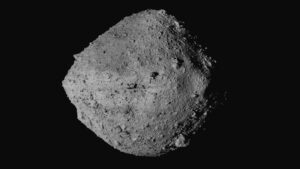
FILE – This undated image provided by NASA shows the asteroid Bennu seen from the OSIRIS-REx spacecraft. On Sunday, Sept. 24, 2023, the OSIRIS-REx spacecraft will fly by Earth and drop off what is expected to be at least a cupful of rubble it grabbed from Bennu, closing out a seven-year quest. (NASA/Goddard/University of Arizona/CSA/York/MDA via AP, File)
Forty minutes later, the recovery team confirmed that the capsule was intact and had not been breached.
“It’s like ‘Wow!’” said NASA astronaut Sunita Williams, who happened to be in Utah training for her own space capsule mission. “This is just amazing. It can go from the movies, but this is reality.”
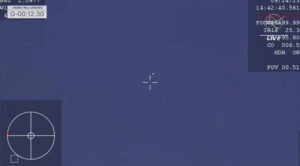
This image taken from video provided by NASA TV shows the capsule released by the Osiris-Rex spacecraft Sunday Sept. 24 2023. (NASA via AP)
Scientists estimate the capsule holds at least a cup of rubble from the carbon-rich asteroid known as Bennu, but won’t know for sure until the container is opened. Some spilled and floated away when the spacecraft scooped up too much and rocks jammed the container’s lid during collection three years ago.
Japan, the only other country to bring back asteroid samples, gathered about a teaspoon in a pair of asteroid missions.
The pebbles and dust delivered Sunday represent the biggest haul from beyond the moon. Preserved building blocks from the dawn of our solar system 4.5 billion years ago, the samples will help scientists better understand how Earth and life formed.
Osiris-Rex, the mothership, rocketed away on the $1 billion mission in 2016. It reached Bennu two years later and, using a long stick vacuum, grabbed rubble from the small roundish space rock in 2020. By the time it returned, the spacecraft had logged 4 billion miles (6.2 billion kilometers).
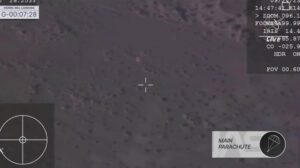
This image taken from video provided by NASA TV shows the capsule released by the Osiris-Rex spacecraft parachuting down to Earth, Sunday Sept. 24 2023. (NASA TV via AP)
Flight controllers for spacecraft builder Lockheed Martin stood and applauded at touchdown from their base in Colorado, ecstatic to have the precious samples on Earth. NASA camera views showed the charred capsule upside down on the sand with its parachute disconnected and strewn nearby, as the recovery team moved in.
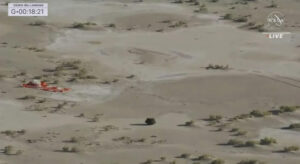
This image taken from video provided by NASA TV shows the capsule released by the Osiris-Rex spacecraft lying on the surface near the parachute after landing to Earth, Sunday Sept. 24 2023. (NASA TV via AP)
NASA’s recovery effort in Utah included helicopters as well as a temporary clean room set up at the Defense Department’s Utah Test and Training Range. The samples will be flown Monday morning to a new lab at NASA’s Johnson Space Center in Houston. The building already houses the hundreds of pounds (kilograms) of moon rocks gathered by the Apollo astronauts more than a half-century ago.
The mission’s lead scientist, Dante Lauretta of the University of Arizona, will accompany the samples to Texas. The opening of the container in Houston in the next day or two will be “the real moment of truth,” given the uncertainty over the amount inside, he said ahead of the landing.
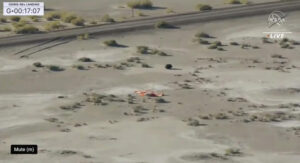
This image taken from video provided by NASA TV shows the capsule released by the Osiris-Rex spacecraft lying on the surface near the parachute after landing to Earth, Sunday Sept. 24 2023. (NASA TV via AP)
Engineers estimate the canister holds 250 grams (8.82 ounces) of material from Bennu, plus or minus 100 grams (plus or minus 3.53 ounces). Even at the low end, it will easily surpass the minimum requirement of the mission, Lauretta said.

Helicopter recovery teams depart the Michael Army Air Field before the arrival of a space capsule carrying NASA’s first asteroid samples on Sunday, Sept. 24, 2023, to a temporary clean room at Dugway Proving Ground, in Utah. The Osiris-Rex spacecraft released the capsule following a seven-year journey to asteroid Bennu and back. (AP Photo/Rick Bowmer)
It will take a few weeks to get a precise measurement, said NASA’s lead curator Nicole Lunning.
NASA plans a public show-and-tell in October.
Currently orbiting the sun 50 million miles (81 million kilometers) from Earth, Bennu is about one-third of a mile (one-half of a kilometer) across, roughly the size of the Empire State Building but shaped like a spinning top. It’s believed to be the broken fragment of a much larger asteroid.
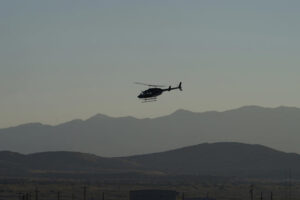
A helicopter recovery team depart the Michael Army Air Field before the arrival of a space capsule carrying NASA’s first asteroid samples on Sunday, Sept. 24, 2023, to a temporary clean room at Dugway Proving Ground, in Utah. The Osiris-Rex spacecraft released the capsule following a seven-year journey to asteroid Bennu and back. (AP Photo/Rick Bowmer)
During a two-year survey, Osiris-Rex found Bennu to be a chunky rubble pile full of boulders and craters. The surface was so loose that the spacecraft’s vacuum arm sank a foot or two (0.5 meters) into the asteroid, sucking up more material than anticipated and jamming the lid.
These close-up observations may come in handy late in the next century. Bennu is expected to come dangerously close to Earth in 2182 — possibly close enough to hit. The data gleaned by Osiris-Rex will help with any asteroid-deflection effort, according to Lauretta.

A helicopter recovery team departs the Michael Army Air Field before the arrival of a space capsule carrying NASA’s first asteroid samples on Sunday, Sept. 24, 2023, to a temporary clean room at Dugway Proving Ground, in Utah. The Osiris-Rex spacecraft released the capsule following a seven-year journey to asteroid Bennu and back. (AP Photo/Rick Bowmer)
Osiris-Rex is already chasing after the asteroid Apophis, and will reach it in 2029.

A NASA helicopter waits for the arrival of a space capsule carrying NASA’s first asteroid samples on Sunday, Sept. 24, 2023, to a temporary clean room at Dugway Proving Ground, in Utah. The Osiris-Rex spacecraft released the capsule following a seven-year journey to asteroid Bennu and back. (AP Photo/Rick Bowmer)
This was NASA’s third sample return from a deep-space robotic mission. The Genesis spacecraft dropped off bits of solar wind in 2004, but the samples were compromised when the parachute failed and the capsule slammed into the ground. The Stardust spacecraft successfully delivered comet dust in 2006.
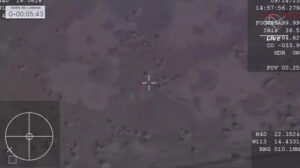
This image taken from video provided by NASA TV shows the capsule released by the Osiris-Rex spacecraft after landing on Earth in the Utah desert, Sunday Sept. 24 2023. (NASA TV via AP)
NASA’s plans to return samples from Mars are on hold after an independent review board criticized the cost and complexity. The Martian rover Perseverance has spent the past two years collecting core samples for eventual transport to Earth.
Courtesy/Source: AP

































































































